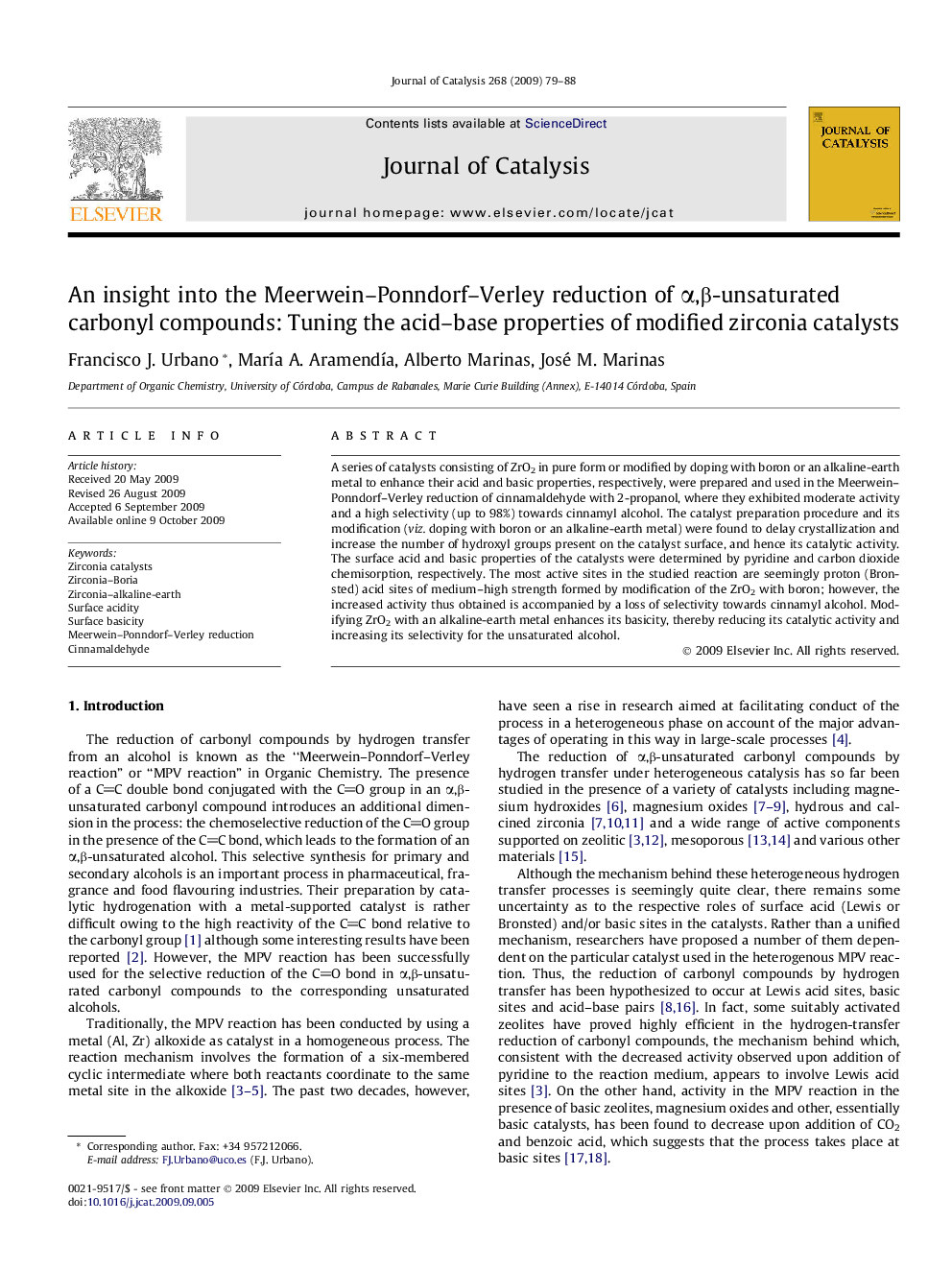| Article ID | Journal | Published Year | Pages | File Type |
|---|---|---|---|---|
| 62494 | Journal of Catalysis | 2009 | 10 Pages |
A series of catalysts consisting of ZrO2 in pure form or modified by doping with boron or an alkaline-earth metal to enhance their acid and basic properties, respectively, were prepared and used in the Meerwein–Ponndorf–Verley reduction of cinnamaldehyde with 2-propanol, where they exhibited moderate activity and a high selectivity (up to 98%) towards cinnamyl alcohol. The catalyst preparation procedure and its modification (viz. doping with boron or an alkaline-earth metal) were found to delay crystallization and increase the number of hydroxyl groups present on the catalyst surface, and hence its catalytic activity. The surface acid and basic properties of the catalysts were determined by pyridine and carbon dioxide chemisorption, respectively. The most active sites in the studied reaction are seemingly proton (Bronsted) acid sites of medium–high strength formed by modification of the ZrO2 with boron; however, the increased activity thus obtained is accompanied by a loss of selectivity towards cinnamyl alcohol. Modifying ZrO2 with an alkaline-earth metal enhances its basicity, thereby reducing its catalytic activity and increasing its selectivity for the unsaturated alcohol.
Graphical abstractPure and modified ZrO2 catalysts were used in the Meerwein–Ponndorf–Verley reduction of cinnamaldehyde with 2-propanol. The most active sites are seemingly Bronsted acid sites of medium–high strength formed by doping ZrO2 with boron. Modifying ZrO2 with an alkaline-earth metal enhances its basicity, thereby reducing its catalytic activity although increasing its selectivity for the unsaturated alcohol.Figure optionsDownload full-size imageDownload high-quality image (43 K)Download as PowerPoint slide
